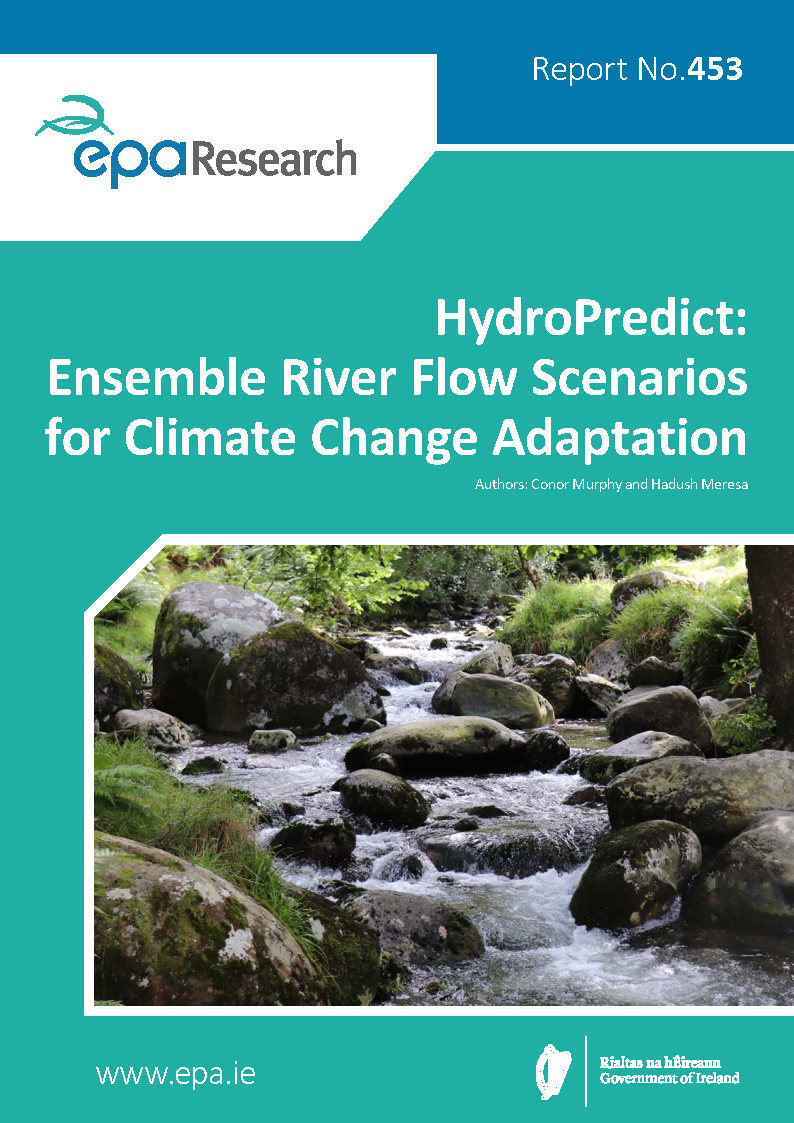Authors: Conor Murphy and Hadush Meresa
Summary: Higher greenhouse gas emissions are associated with large reductions in average summer and annual low flows in rivers. Changes in meteorological droughts in Ireland are driven by a transition to wetter winters and drier summers, together with increased evapotranspiration losses during summer and late spring months, leading to more frequent spring and summer droughts. The magnitude of future drought changes depends on future greenhouse gas emissions, with the most substantial changes found for higher emissions. Adapting to climate change in the water sector should place an increased emphasis on addressing the changing nature of droughts, especially across sensitive sectors. Using the latest climate models and emissions storylines, this research project assessed the projected impacts of climate change on flow conditions and droughts across 37 river catchments in Ireland.

HydroPredict aims to advance understanding of how climate change will affect river flows and drought events over the coming decades. Using the latest climate models and emissions storylines, the research assessed the impacts of climate change on flow conditions and droughts across 37 river catchments. Higher greenhouse gas emissions are associated with large reductions in average summer and annual low flows. For winter, increases in average flows are projected. If ambitious greenhouse gas reductions are achieved, more moderate reductions in summer and low flows are projected by the middle and end of the century. Changes in meteorological droughts in Ireland are driven by a transition to wetter winters and drier summers, together with increased evapotranspiration losses during summer and late spring months, leading to more frequent spring and summer droughts. The magnitude of future drought changes depends on future greenhouse gas emissions, with the most substantial changes found for higher emissions. Results arising from this project highlight the importance of temperature increases and larger evapotranspiration losses to future changes in droughts. The eastern and midland regions are expected to experience the greatest increases in drought magnitude, frequency and duration.
HydroPredict results have relevance for climate change adaptation planning across multiple sectors, particularly agriculture, biodiversity and water resources management, as well as for local-scale impacts and adaptation assessments. The projected changes in low flows and droughts would pose challenges for water management, especially in the context of growing water demand. Groundwater resources, crucial for water provision, particularly in the midlands, may be influenced by changes in winter drought frequency and magnitude, possibly affecting recharge potential. The agricultural sector, particularly grass-fed dairy farming, relies heavily on consistent grass growth. The projected increase in spring and summer droughts could have adverse effects on grass growth and thus affect the sector. In addition, drought events can lead to degraded water quality, negatively affecting riverine species and habitats. The exact impact of future drought changes on water quality remains poorly understood and requires further research.
Adapting to climate change in the water sector should place an increased emphasis on addressing the changing nature of droughts, especially across sensitive sectors. Existing vulnerability was evident during drought conditions in 2018, emphasising the need for adaptive measures. HydroPredict shows that success in reducing greenhouse gas emissions globally will be crucial to avoiding the most severe reductions in low flows and the increased severity of future droughts in Ireland. Nationally and locally, priority should be given to better monitoring of droughts and their impacts. Databases of historical drought impacts and improved monitoring systems based on standardised drought indices that include evaporative losses can assist in adaptation planning.
https://www.epa.ie/media/epa-2020/publications/research/Research-453.jpg